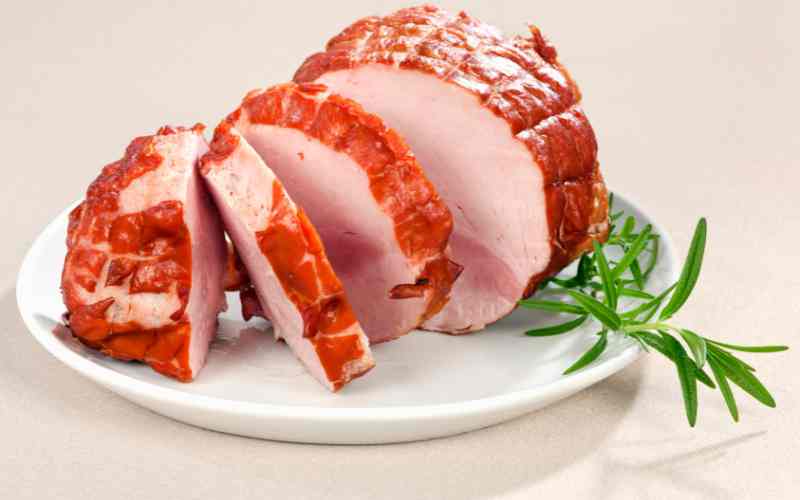Dry ham, once a prized delicacy, can turn into a culinary disappointment. But fret not, as there are several ways to breathe life back into this aged meat. This comprehensive guide will delve into the causes of dry ham and equip you with effective techniques to restore its delectable juiciness.

Image: kitchendoings.com
Understanding the Causes of Dry Ham
Most hams begin their journey as perfectly moist cuts of pork. However, over time, factors like air exposure, improper storage, and prolonged cooking can lead to dehydration, resulting in a dry and unappetizing ham.
- Air exposure: Ham’s surface layer, when exposed to air, undergoes a process called oxidation, which dries the meat.
- Improper storage: Incorrectly storing ham at inappropriate temperatures or exposure to extreme humidity can exacerbate the drying process.
- Prolonged cooking: Overcooking ham inadvertently dries it out, depriving it of its natural juices.
Step-by-Step Guide to Restoring Dry Ham
Now that you have an understanding of what might have caused your ham to dry out, let’s explore some effective methods to rehydrate it:
1. Reheating with Liquid:
Gently reheat the ham in an oven or a skillet with a bit of liquid, such as water, broth, or juice. Cover the ham to trap moisture and prevent further evaporation. This method helps distribute moisture throughout the meat.
2. Brining the Ham:
Create a flavorful brine solution by dissolving sugar and salt in water. Submerge the dry ham in this brine for several hours or overnight. This process allows the ham to absorb moisture and enhances its taste.
3. Steam the Ham:
Steam the ham over a pot of boiling water, using a steamer basket or a colander lined with foil. Steam the ham for 10-15 minutes, depending on its thickness, until it becomes moist and heated through.
4. Use a Slow Cooker:
Place the ham in a slow cooker with a cup of liquid. Cook the ham on low for several hours, adding more liquid if necessary. The slow and steady cooking will help the ham reabsorb its moisture.
5. Microwave with a Damp Towel:
Wrap the ham in a damp paper towel and microwave it on low power for 1-2 minutes, depending on the ham’s size. Check the ham regularly and add more moisture to the towel if needed.
Expert Insights and Additional Tips
- “To prevent dry ham in the first place, store it properly in a sealed container or vacuum-sealed bag.” – Chef Michael Symon
- “Adding a glaze or sauce to the ham before roasting or baking can create a protective layer, preventing moisture loss.” – Food writer Stephanie Manley
- “If your ham is beyond saving, don’t despair. Use it in soups, stews, or sandwiches where its flavor can still shine.” – James Beard Award-winning chef Marcus Samuelsson

Image: wurstcircle.com
How To Fix Dry Ham
Conclusion
Fixing dry ham requires understanding its causes and employing effective rehydration techniques. By following the steps outlined in this guide, you can restore the succulence and flavor of dry ham, transforming it into a culinary delight once again. Whether you choose to reheat it, brine it, steam it, cook it in a slow cooker, or microwave it, experiment and find the method that works best for you. Remember, the key to restoring dry ham is to reintroduce moisture and treat it with the care it deserves.







